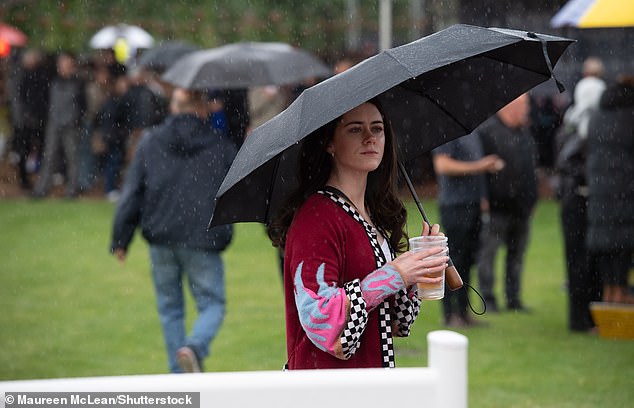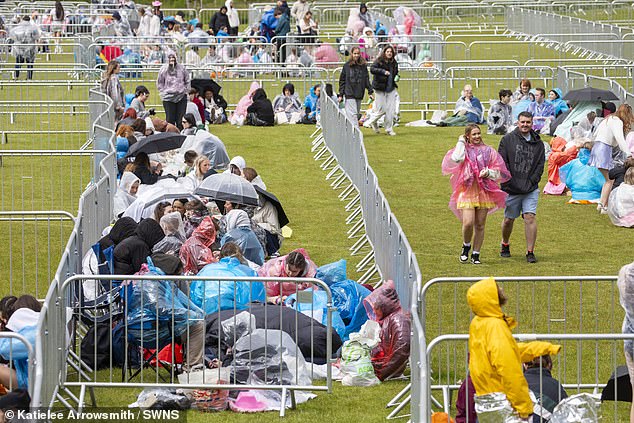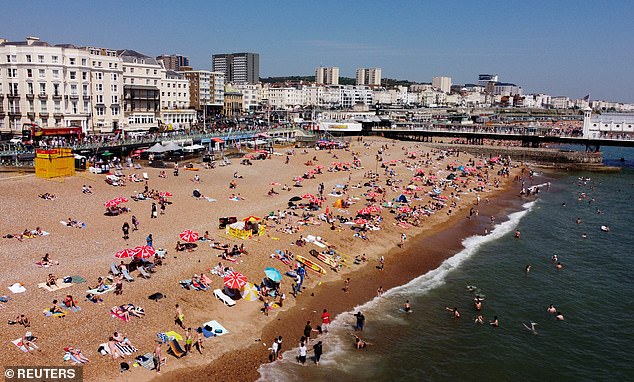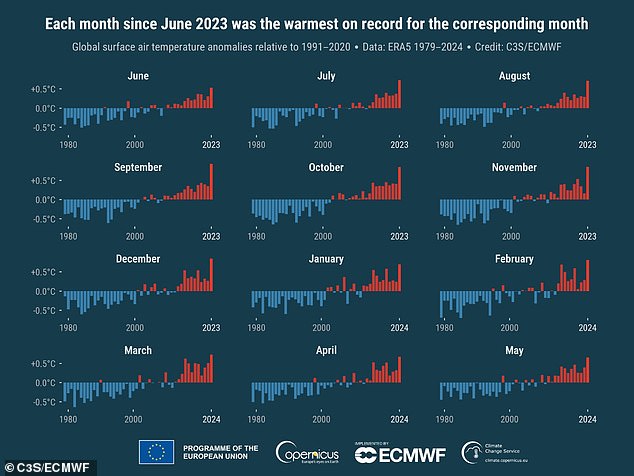Why is Britain so cold in June? Temperatures this month are at half 2023 levels – and it won’t get much warmer anytime soon, Met Office warns
Summer is officially just over a week away, but you may have to wait a little longer before firing up the grill.
Britain has been battered by cold winds and rain so far in June, with temperatures around three to five degrees below average for this time of year.
The Met Office has revealed that temperatures are half what they were a year ago, marking the warmest June on record.
It says temperatures are lower than normal due to a ‘sharp northerly wind’ drawing cold air from the Arctic southwards over Britain.
Conditions won’t warm until the end of the month, but not before the ground may be covered in frost.
The Met Office has revealed that current temperatures (pictured June 11) are around half of what they were a year ago
This time last year, parts of Britain, including London, Cambridge and Belfast, were experiencing temperatures close to or even above 30°C (86°F).
But now the same regions are just half this – around 15°C (60°F), as the Met Office reflects ‘what a difference 12 months makes’.
Alex Deakin, meteorologist and weather forecaster for the Met Office, blamed the jet stream – a fast-moving band of air about five to six miles above the Earth’s surface.
The jet stream drives the cold winds southwards from the Arctic to Britain, meaning it ‘feels chilly’ despite the ‘fairly strong June sun’.
“When the air comes from the north, it’s no surprise there’s a bit of a chill in the air,” Deakin said.
“You’ve probably noticed that it’s been feeling quite chilly the last few days, despite some decent sunshine.”
Rebekah Sherwin, deputy chief meteorologist at the Met Office, said there is “no strong signal” that temperatures will rise above average any time soon.
“So far this month we have been in a weather pattern that has brought a northerly airflow into Britain, with high pressure to the west and low pressure over Scandinavia channeling that flow,” she said.
The last time it was this cold in the first ten days of June was in 2020, she added.

A drizzly June: punters are pictured seeing rain at the Royal Windsor Racecourse in Berkshire, June 11, 2024

Taylor Swift fans brave the cold, wind and rain as they queue for her show at Edinburgh’s Murrayfield, June 7, 2024

Stark contrast: June 2023 was the warmest June on record, the Met Office confirmed. Pictured: Brighton Beach on June 25, 2023
Simon Partridge, meteorologist at the Met Office, said the times that we even expect ‘a little frost’ in some places in the coming nights.
“This will be mainly across Scotland and possibly also northern England and Northern Ireland, where temperatures could fall to around freezing,” he said.
Temperatures will remain around or slightly below average for most of the rest of June, he added, but “it’s not that unusual” due to the variability of British weather.
It’s a stark contrast to this time last year, when Brits were basking in warm weather during the hottest June on record for Britain.
On June 11, 2023, the maximum temperature in London was 32°C (89.6°F), but exactly one year later it was only 16°C (60.8°F).

Pictured: Wet conditions between the village of Eton Wick and Slough next to Roundmoor Ditch in Berkshire, June 9, 2024
Similarly, Cambridge reached highs of 30.3°C (86.5°F) on June 11 last year, but only 15°C (59°F) on Tuesday.
Tonight will be chilly in rural areas and there may even be ‘an isolated grass frost’, the Met Office says.
And outbreaks of rain are forecast to move north-east across Britain for the rest of the week, as well as strong winds in the south-west.
“Tomorrow’s UK forecast shows a weather front moving in from the west and reaching all parts of Britain during the day,” Sherwin said.
‘This will bring windy conditions, especially around the west and south-west coasts.
‘There is a signal that temperatures will return to near normal this weekend, but weather forecasts for next week remain largely uncertain, with even heavy rain showers in some places.’
Scattered showers are likely to prevail in the second half of the month and could turn into heavy rain in some places, with temperatures ‘close to or slightly below average’.
In early July it is unclear whether any particular weather pattern will dominate, but the Met Office is hopefully hinting at ‘periods of drier, sunnier weather’.
According to BBC Weather’s monthly forecast, there should be a trend towards ‘calmer and even summer-like conditions’ after mid-June, but ‘other solutions are also possible’.

The Met Office says Britain had its warmest May and warmest spring on record, despite being ‘wet and dull’. Crowds enjoy the warm weather at a swimming pool in Hathersage, Derbyshire, England on May 10, 2024

May 2024 was the twelfth consecutive record month, with every month since June 2023 being the warmest on record
This follows confirmation from the Met Office that Britain had its warmest May and warmest spring on record, despite being ‘wet and dull’.
The Met Office blamed climate change for these record figures, but also warned that natural variation plays a role in the country’s weather.
Looking at the global picture, last month was the warmest May on record, going back to 1940. the EU’s climate change program unveiled last week.
The global average temperature for May 2024 was 15.91°C (60.6°F), which is 0.19°C (0.34°F) higher than the temperature of the previous warmest May of 2020.
Globally, May 2024 is also the twelfth consecutive record month, with every month since June 2023 being the warmest on record.
